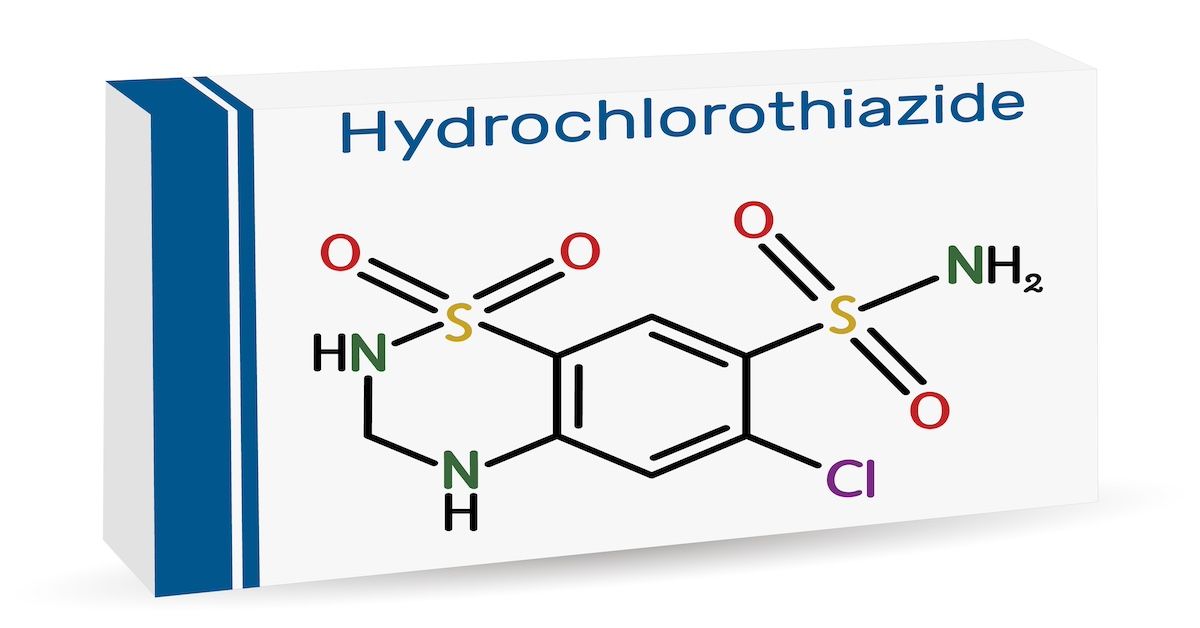News
Article
Chlorthalidone May Be More Appropriate Diuretic for Patients With Hypertension, Previous CV Event
Author(s):
Patients receiving chlorthalidone had lower rates of major cardiovascular (CV) events and noncancer-related deaths vs those receiving hydrochlorothiazide.
Prior cardiovascular (CV) events should be taken into account when deciding between diuretic treatment for managing blood pressure, say researchers of a new analysis, which found a lower risk of secondary CV events with chlorthalidone treatment.1
These new findings come from a prespecified secondary analysis of the Diuretic Comparison Project (DCP), a randomized clinical trial of patients with hypertension from more than 70 Veterans Affairs health care systems. Findings from the main DCP analysis showed that with low doses, there were no differences in major CV events and noncancer deaths between chlorthalidone and hydrochlorothiazide treatment.2 This new analysis, published on JAMA Network Open, assessed whether differences would occur when looking at secondary CV prevention between the 2 thiazide diuretics.
Although previous research shows that a low dose of chlorthalidone vs a low dose of hydrochlorothiazide does not result in different rates of major cardiovascular events, the authors of the present analysis sought more information on secondary CV prevention between these diuretics | Image Credit: bacsica-stock.adobe.com

Currently, most US-based thiazide prescriptions are for hydrochlorothiazide. Previous research has pointed to chlorthalidone being superior to hydrochlorothiazide for preventing CV events in these patients, however, with the former agent having a longer half-life and having shown a greater ability in lowering blood pressure over 24 hours. However, chlorthalidone carries certain adverse effects, including hypokalemia,3 which has been associated with an increased risk of CV events.
In this latest analysis, the researchers found that among the subgroup of patients with prior myocardial infarction (MI) or stroke, chlorthalidone was associated with an absolute risk reduction of 5.1% (95% CI, 4.0%-6.2%) compared with hydrochlorothiazide when it came to occurrence of a second major adverse CV event (MACE).
“The findings suggest that chlorthalidone may be associated with reduced MACEs and noncancer deaths in patients with prior MI or stroke compared with hydrochlorothiazide,” explained the researchers. “Accounting for this subgroup knowledge when treating patients, chlorthalidone may benefit those with prior MI or stroke. Future studies should evaluate this subgroup in further detail to determine whether these results are simply a chance finding or are real and potentially mediated through either hypokalemia prevention or potassium supplementation.”
Data from over 1400 patients with prior MI or stroke who were 65 years or older were included in the analysis. Patients were randomized to receive either chlorthalidone or hydrochlorothiazide for an average of 2.4 years. Compared with the 12,000 patients in the main analysis who had no prior MI or stroke, these patients with prior CV events were more likely to be Black, currently smoke, live in urban areas, be treated with multiple antihypertensive drugs, have diabetes, and have an estimated glomerular filtration rate less than 60 mL/min/1.73m2.
Patients receiving chlorthalidone had lower rates of major CV events—stroke, MI, urgent coronary revascularization for unstable angina, or heart failure hospitalization—and noncancer deaths compared with those receiving hydrochlorothiazide (14.3% vs 19.4%; HR, 0.73; 95% CI, 0.57-0.94; P = .01). The lower incidence associated with chlorthalidone was largely driven by a reduction in risk of acute heart failure (4.6% vs 7.2%; HR, 0.64; 95% CI, 0.41-0.98).
Chlorthalidone was associated with a higher prevalence of a nadir potassium level less than 3.1 to 3.5 mEq/L compared with hydrochlorothiazide (37.8% vs 28.5%; P < .001). Although incidence of a nadir potassium level less than 3.1 mEq/L was comparable between the 2 groups included in this secondary analysis, chlorthalidone was associated with a greater incidence of the marker in the group of patients without prior MI or stroke.
“This difference likely led to more hospitalizations for hypokalemia in the chlorthalidone group. It is unclear why, in the subgroup with prior MI or stroke, there was an increased incidence of a potassium level between 3.1 and 3.5 mEq/L in the chlorthalidone group compared with the hydrochlorothiazide group, but this did not translate to an increased incidence of a potassium level less than 3.1 mEq/L or an increased risk of hypokalemia-related hospitalizations,” described the researchers. “Of note, those taking chlorthalidone in the group with prior MI or stroke included a greater percentage of patients taking potassium supplements, which was not seen in those without prior MI or stroke.”
References
1. Ishani A, Hau C, Cushman E, et al. Chlorthalidone vs hydrochlorothiazide for hypertension treatment after myocardial infarction or stroke: a secondary analysis of a randomized clinical trial. JAMA Netw Open. 2024;7(5):e2411081. doi:10.1001/jamanetworkopen.2024.11081
2. Ishani A, Cushman W, Leatherman S, et al. Chlorthalidone vs. hydrochlorothiazide for hypertension-cardiovascular events. N Engl J Med. 2022;387(26):2401-2410. doi:10.1056/NEJMoa2212270
3. Kerndt CC, Patel P, Patel JB. Chlorthalidone. StatPearls. Published January 2024. Accessed June 11, 2024. https://www.ncbi.nlm.nih.gov/books/NBK553174/#:~:text=Most%20commonly%2C%20chlorthalidone%20causes%20hypokalemia,chlorthalidone%20periodically%20throughout%20hypertensive%20management




